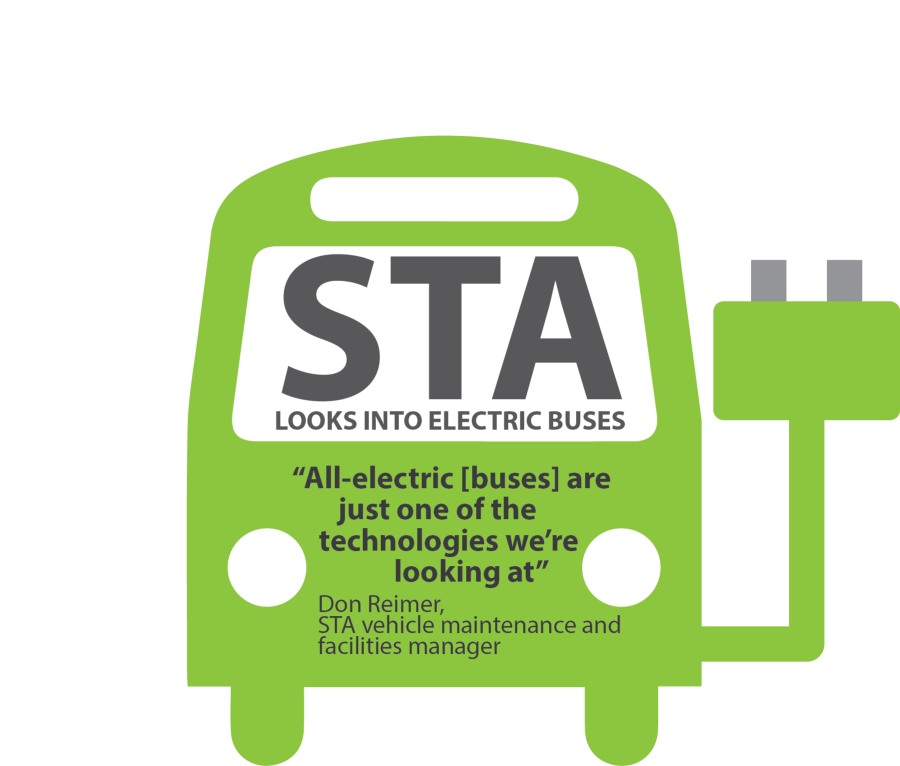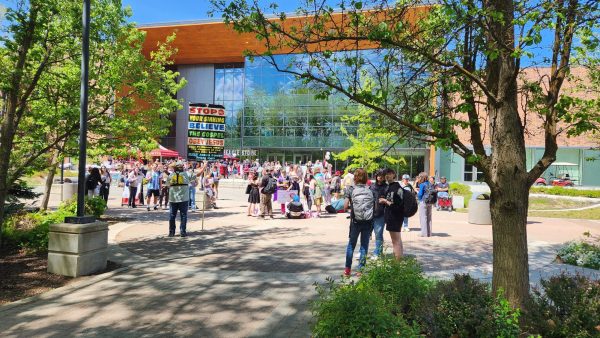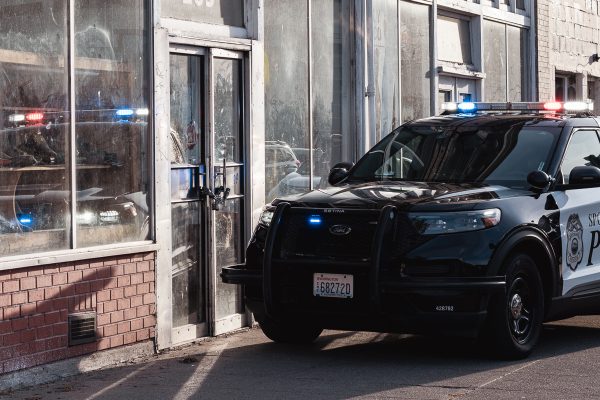Spokane Transit Authority sports the electric ride
April 9, 2014
If riding the bus makes some people uncomfortable, they could potentially sit a little easier in a new environmentally-friendly all-electric bus from Spokane Transit Authority.
As part of a statewide evaluation which STA participated in, an all-electric bus made its way through Spokane city routes last month. Both drivers and passengers gave positive feedback from the experience, according to Don Reimer, STA vehicle maintenance and facilities manager.
“It went quite well,” Reimer said. “We had no problems with the vehicle at all.”
Drivers of the electric vehicle were pleased with the quiet, smooth ride, according to Reimer.
Going into the trial, Reimer said there were some concerns about whether the buses could make it through a full day of routes. The new technology has a range of 155 miles, and many buses travel 200 miles or more throughout a day.
Reimer indicated that the electric buses potentially could reduce daily operating costs.
BYD motors, a Chinese company who makes the vehicle, claims the bus can run 24 hours from one nightly charge of about five hours. This held true through the trial period for STA.
While most buses have a 12-year life span, these buses could last up to 20 years, according to BYD motors.
Beth Bousley, director of communications at STA, said that they are not looking to purchase any new vehicles for a number of years. New buses would be delivered in 2018-2019.
Although this all-electric bus had a strong debut, Reimer said STA still has other eco-friendly options. There is also the potential to have electric buses with charging stations along the route, instead of charging the bus all night. This could be less expensive than the one-time charge.
“We are always interested in exploring environmentally-friendly, cost-effective fuel alternatives,” said E. Susan Meyer, STA chief executive officer, in a press release.
“All-electric [buses] are just one of the technologies we’re looking at,” Reimer said. “We’re always trying to gather information on any resource we can get.”
He cited compressed natural gas, liquefied petroleum gas and propane as other fuel sources they are exploring.
This year eight new buses will be arriving with electric cooling system technology that STA found to improve fuel economy by 6 percent compared to buses using a conventional hydraulic cooling system.
The number of hybrid-diesel vehicles has also increased in recent years. Since 2007, the number of these vehicles in STA’s fleet has grown to 28. They have a 17 percent better fuel economy than standard diesel buses and produce 17 percent less emissions.
Reimer said there are great advancements being made in these new technologies, but he suggested there is still a lot to learn before any decisions are made on replacement buses.
“A lot of this is still in the infancy stage,” Reimer said.







![Simmons said the biggest reasons for her success this year were “God, hard work, and trusting [her] coach and what she has planned.”](https://theeasterner.org/wp-content/uploads/2024/05/image1-1-1200x800.jpg)


![Simmons said the biggest reasons for her success this year were “God, hard work, and trusting [her] coach and what she has planned.”](https://theeasterner.org/wp-content/uploads/2024/05/image1-1-600x400.jpg)






